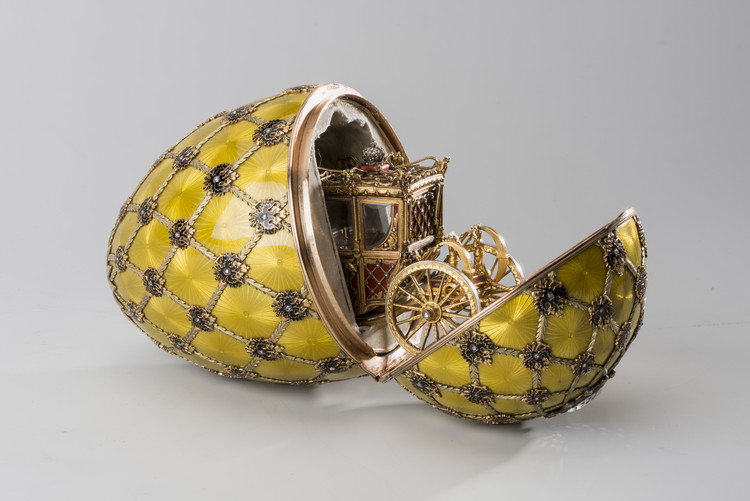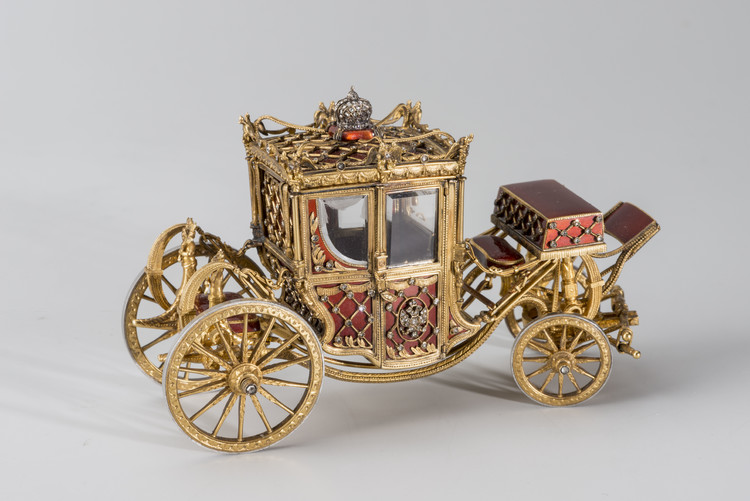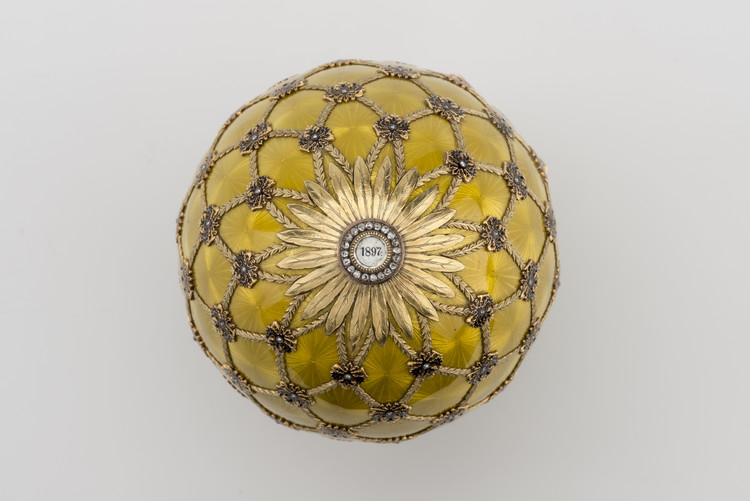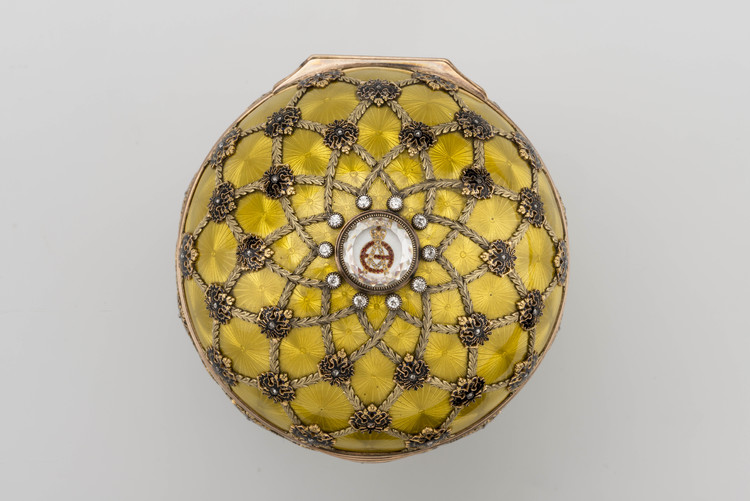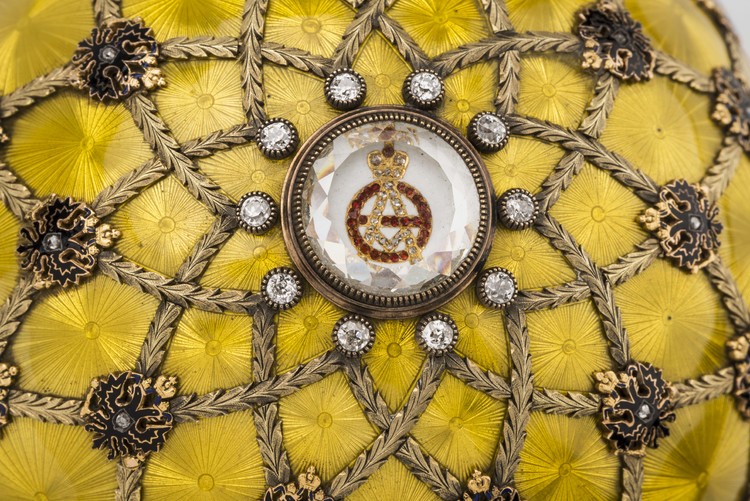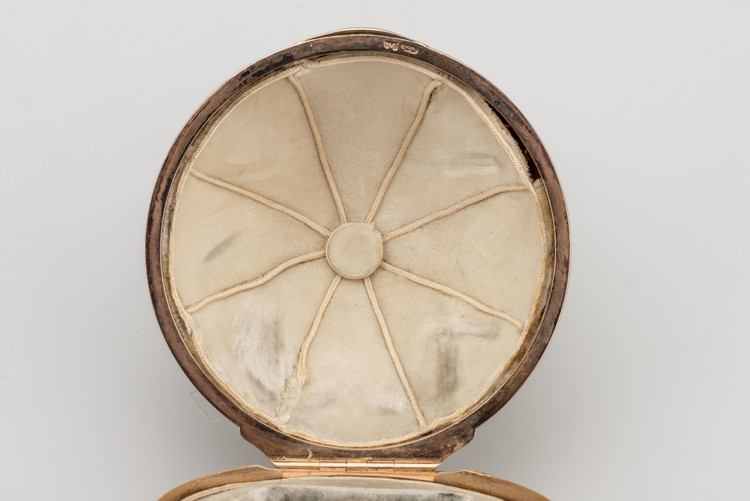The egg created for Alexandra Feodorovna for Easter 1897 was the first one dedicated to an important political event, the coronation of Nicholas II. Subsequently Fabergé created numerous Easter eggs commemorating the main events of the turbulent Russian history of the late nineteenth and early twentieth centuries, for example, the construction of the Siberian Railroad and the three-hundredth anniversary of the Romanov dynasty.
The surprise in the Coronation Egg is a tiny but accurate copy of the carriage that carried Alexandra Feodorovna into the ancient capital of Moscow on May 9, 1896 The carriage had been built by Johann Conrad Bukendal back in 1793 for Catherine II and was used for coronations. In 1917, among other valuables of the palace, it was evacuated to Moscow and only returned to Leningrad in 1929, when it was given to the State Hermitage for safekeeping and where it remains today.
The unique model of the carriage, a masterpiece of jewelry and carriage art, was carried out by the young master Georg Stein, who regularly visited the court stables in St. Petersburg so that all the parts of the model would accurately repeat the parts of the carriage, such as its turntable. The miniature gold carriage with red enamel and diamonds turns and rolls in accordance with all the rules of its life-size version, on a spring suspension. Both doors open with a turn of tiny gold handles, and folding steps come out the doors from inside.
Carl Fabergé got the idea for the shell from the gold brocade mantles worn by the emperor and empress during the rite of Holy Coronation. The mantles were made by the Alexander and Vladimir Sapozhnikov firm from heraldic gold brocade with woven black double-headed eagles. The precious shell of the egg is covered with translucent yellow guilloché enamel of carved beams, which has the sparkle and iridescence of gold brocade. On top, without the slightest gaps, there is attached a lattice of black enamel eagles with diamonds, connected by green gold leaves.
The real ornament of the egg is a large, flat rose-cut diamond attached to the upper half. Through the magical crystal we can see the empress’s initials. The letter A is made of small diamonds, and the F of rubies. At the bottom of the egg there is a rose-cut diamond of smaller dimensions, through which you can see the date: 1897.
The description of this luxurious egg in the jeweler’s invoice of April 18, 1897, sent to the emperor, was extremely laconic: “Egg of yellow enamel and carriage.” The price was 5,500 rubles. The invoice also notes “emerald egg with diamonds” costing 1,000 rubles (which unfortunately is missing). As in the first Imperial egg, it was the very last “treasure,” suspended inside the tiny carriage on a special hook. As we can see, Alexander III’s idea of a “highly valuable treasure” was fruitful and incorporated by Fabergé in later works.
